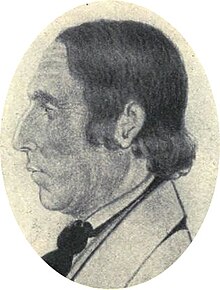Chase Home Museum of Utah Folk Arts
 | |
 | |
| Established | 1987 (built 1856)[1] |
|---|---|
| Location | Liberty Park 600 East 900 South Salt Lake City, UT 84105 |
| Coordinates | 40°45′23″N 111°53′55″W / 40.7563925°N 111.8985922°W |
| Administrator | Rachel Haberman |
The Chase Home Museum of Utah Folk Arts is operated by the
History

In 1847, Isaac Chase emigrated to Utah with
Folk Art Collection
The Chase Home Museum of Utah Folk Arts is the only museum in the United States that is dedicated to displaying a state-owned collection of contemporary folk art produced by Utah residents. A large portion of the collection comes from Utah's Native American population who used wood,
The collection also includes many items created by people who came to Utah through immigration and refugee programs. Although many traditional arts are modified or lost when people migrate from one society to the other, the most meaningful and symbolic folk art often persists. Folk arts focused on religious belief, identity, and community celebration are the most common. The folk art collection at the Chase Home Museum includes wood carvings, pottery, jewelry, baskets, textiles, and sculptures with roots in European, Asian, Hispanic, Polynesian, and African cultures.
Other contemporary folk art in the collection at the Chase Home Museum include occupational folk art. Occupational folk art refers to items that are created for functional use in one's occupation, but often also reflect the aesthetics of the creator. Sometimes these items are created as decorative pieces to commemorate their occupational heritage and celebrate the skills that created them. Examples of occupational folk art in the collection include: stone carving, blacksmithing, saddle making, horsehair hitching, and woodworking.
Location
Liberty Park, located in Salt Lake City between 900 South and 1300 South and 500 East and 700 East, is the second largest park in Salt Lake City, Utah. The Chase Home Museum of Utah Folk Arts is located just west of the park's center.
See also
- List of museums in Utah
- List of the oldest buildings in Utah
- Mormon art
- National and ethnic cultures of Utah
- Folk Art
References
- ^ "Utah Heritage Foundation - Isaac Chase House, Salt Lake City". Archived from the original on 2016-09-20. Retrieved 2015-09-17.
- ^ "Chase Home Museum of Utah Folk Arts, Utah Division of Arts and Museum". 2019.
- ^ http://www.smithsonianmag.com/museumday/venues/the-chase-home-museum-of-utah-folk-arts/?no-ist [dead link]
- ^ Sanders, William. 1998. Isaac Chase Utah Pioneer, 1847.
External links
- Chase Home Museum of Utah Folk Arts - Official website
